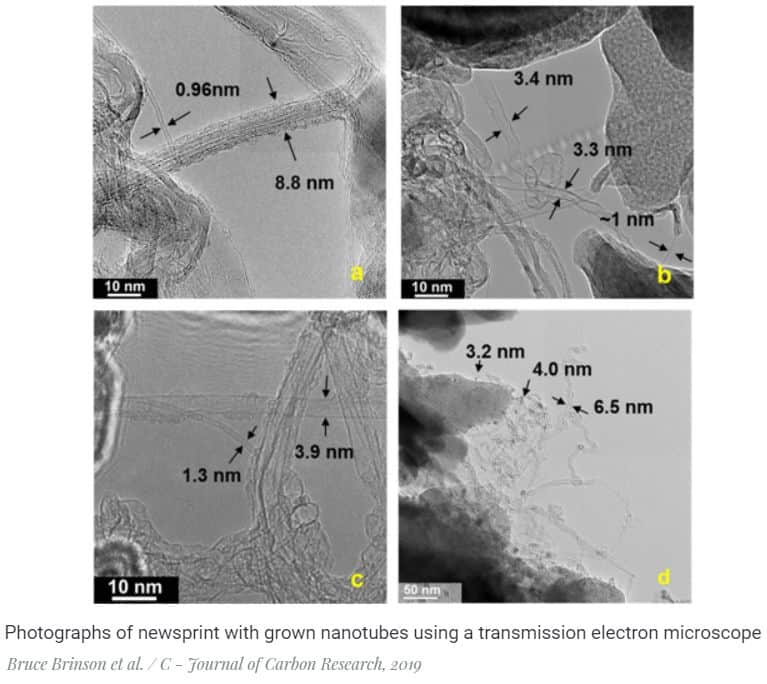Newspaper sheets from kaolin-treated paper can be used as a substrate for the synthesis of single-walled carbon nanotubes(SWCNTs). Processed newspapers can be stacked and used several sheets in one synthesis, the scientists say in this article describing the method.
There are different methods for producing carbon nanotubes, including the chemical vapour deposition(CVD) method is popular among them. For this method, substrates with metal particles acting as a catalyst are used. A substrate is placed in an insulated chamber and a mixture of gases is supplied, one of which contains carbon, such as hydrocarbons. Because of the high temperature, the carbon-containing gas breaks down on the surface of the metal catalytic particles and begins to grow nanotubes on them.
This method is quite widespread due to its relative convenience and flexibility but also has several problems. In particular, expensive substrates are usually used for it, which, moreover, cannot be folded together, which results in not as many nanotubes in a single synthesis cycle as could potentially be.
A team of scientists led by Andrew R. Barron from Rice University, Houston, USA showed that the synthesis of single-walled nanotubes can be made more economical and environmentally friendly by using newsprint as a substrate. As the main material, they took empty fragments of newspapers without ink, provided by the American newspapers Voice of Asia, Pasadena Citizen and Rice Thresher. The sheets of these newspapers are sized during production, in which the paper is impregnated with additional substances, which, as a rule, do not allow ink to be absorbed too deep into the sheet.
Before the synthesis, the researchers impregnated small fragments of the newspaper (one and a half centimetres wide and eight in length) with aluminum oxide and iron nitrate, which serve as precursors for iron oxide particles. Then the sheets were calcined in a furnace, and after that, they were placed in a chamber for chemical deposition from the gas phase, where a mixture of hydrogen, acetylene and water vapour was also pumped. As a result, a carbon black layer was formed on paper.
Researchers studied carbon black samples using fluorescence spectroscopy and the spectrum found the presence of single-walled carbon nanotubes. Then the conclusion was confirmed using Raman spectroscopy and transmission electron microscopy. An analysis of the data from microscopy showed that on the graph of the distribution of the thickness of the nanotubes there are two peaks at the level of one and four nanometers. The peak at four nanometers is most likely due to the aggregation of single-walled nanotubes, rather than the formation of multilayer ones.

Interestingly, the nanotubes formed only on fragments of the Voice of Asia newspaper. The analysis showed that the paper of this newspaper mainly uses kaoline as a slither, while in the other two newspapers it acts as an additional substance. Researchers believe that this is due to the fact that kaoline contributes to the formation of iron particles, acting as the basis for the synthesis of nanotubes.
Previously, scientists from Rice University have repeatedly engaged in the creation of graphene from unusual materials with the help of a laser. For example, they developed methods to create graphene from sugar, wood, as well as toast, coconut and potatoes.